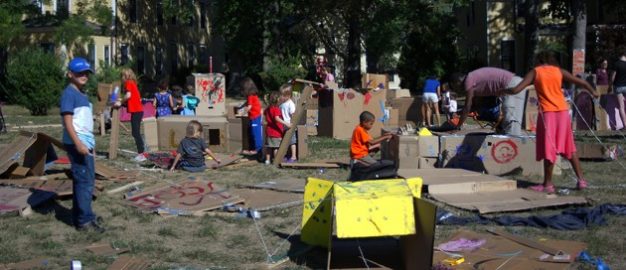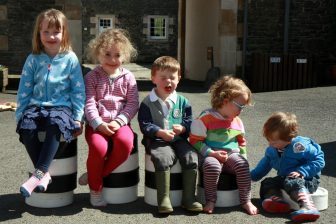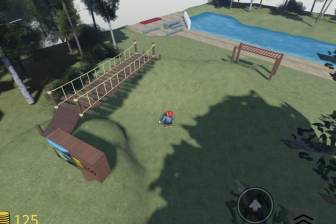
When kids create their own playground
Eve Mosher was getting frustrated. Her children, ages 4 and 6, encountered rules everywhere they went to play in New York City. Even at parks and playgrounds, expressly built for the purpose of play, they were chastised for digging in the dirt or climbing trees. Mosher, a native of the Houston suburbs, says that her city kids had “no sense of ownership over a space; there’s no sense of independence and self-confidence that comes from playing on their own.”
She and fellow parent Alexander Khost were talking about this issue one Saturday in August 2014 when the topic of adventure playgrounds came up. By Sunday they had a plan to bring an adventure playground to New York; by December, play:groundNYC hosted its first event.
Adventure playgrounds aren’t a new concept. Also known as waste-material playgrounds, they were popularized in Europe and the U.K. after World War II, when people realized that kids were playing in bombed-out lots. “It was a very urban, rough play experience,” explains Robin Meyer, a playground-design project manager and one of eight board members of play:groundNYC. Hanna Rosin gave a great overview in her 2014 Atlantic article on the subject, and Erin Davis’s 2015 film The Land documents a modern Welsh adventure playground in all its tree-climbing, fire-starting, free-range glory.
Shifts in parenting trends are reviving interest in waste-material playgrounds. So-called helicopter parenting, in which parents hover and rush in at the first sign of distress, is increasingly being called out by authors and researchers writing books and articles about the importance of letting children fail, working out their own problems, and developing independence. New studies show that we should be letting children engage in riskier play.
Adventure parks benefit parents as well as kids. Wilson, who is also on the board of play:ground NYC and became interested in playgrounds after working as a nanny, posits that adventure playgrounds might help assuage hovering moms and dads. “There’s a lot of social pressure among caregivers to intervene when their kid is making another parent nervous,” she says. “Other adults will step in very quickly so people will preemptively step in so as not to deal with the social pressure.” That pressure is off in a monitored, safe space like an adventure playground, where the culture is to let kids do their own thing.
Permission to sit back without feeling neglectful.
Sometimes, though, it takes a bit of reprogramming before parents can loosen the reins. It’s not uncommon to find the occasional sign that says, “Parents! Sit down and relax!”
Using an organization called Pop Up Adventure Play as a model and source for playworker training, Mosher, Khost, and their six fellow board members started hosting pop-up adventure playgrounds around the city, including on Governors Island, where they’ve just signed a one-year lease. Their seasonal adventure playground for kids ages 6-13 will open there in May. play:groundNYC also had a residency at the Brooklyn Children’s Museum this past winter, and they’ve exceeded their $25,000 goal on Kickstarter to help fund their efforts. “We’re at a really exciting moment right now, where there’s growing interest … and I think parents are ready,” says Meyer.
“There’s all kinds of powerful research that shows that play is a natural vehicle for children to learn about themselves and the world,” explains Roger Hart, a professor in the Environmental Psychology Ph.D. Program of the CUNY Graduate Center, the co-director of the Children’s Environments Research Group, and a member of the play:groundNYC board of advisors.
They’re making a new world.
Author: Katherine Martinelli from The Atlantic
Photo Credit: photo by City Lab



